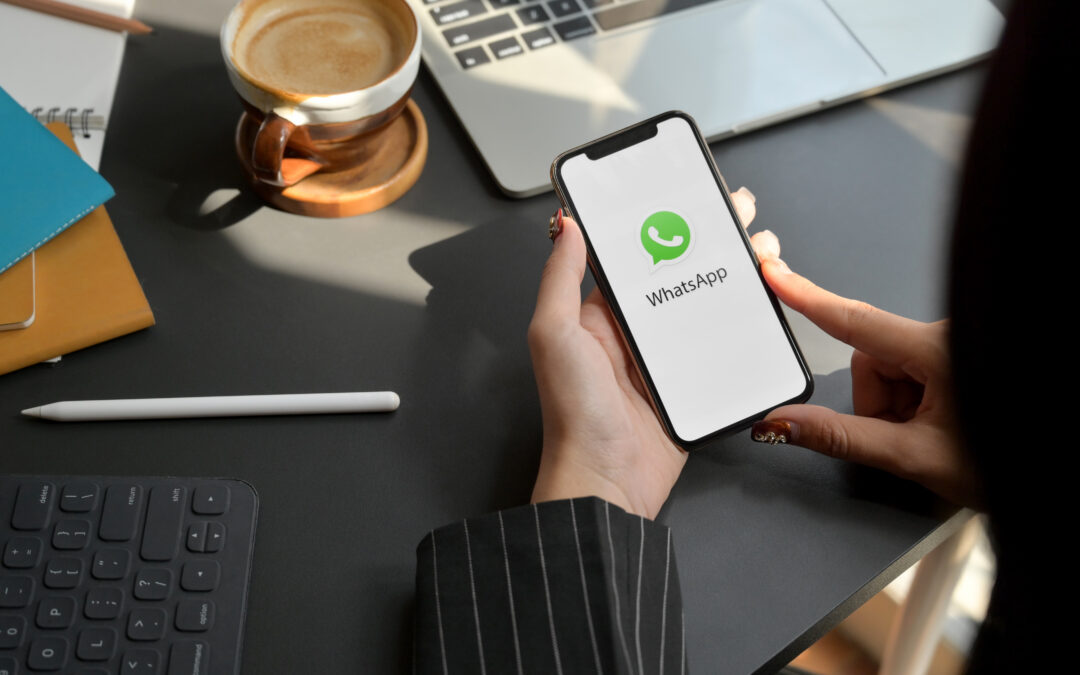In today’s hyper-connected world, customers expect instant communication, personalized experiences, and convenience at every step of their shopping journey. As eCommerce businesses, we’ve all seen how traditional customer support channels can fall short—delayed responses, generic answers, and clunky user experiences. That’s where WhatsApp Customer Support comes in as a game-changer.
We’ve found that integrating WhatsApp into our eCommerce operations isn’t just about being where our customers are—it’s about engaging them in a way that feels natural, helpful, and immediate. With over 2 billion users globally, WhatsApp is no longer just a messaging app—it’s a powerful tool to drive engagement, retention, and most importantly, sales.
Let’s break down how we can all use WhatsApp eCommerce to increase our sales while providing seamless customer experiences.
1. Create a Personalized Shopping Experience
We all know how much customers appreciate a personal touch. WhatsApp allows us to offer one-on-one conversations that build trust and rapport. By using rich media—like images, videos, catalogs, and quick replies—we can showcase products just like we would in a physical store.
Imagine a customer landing on our website and browsing a product. Instead of leaving them with questions, we engage them directly on WhatsApp: “Hi! Need help choosing the right size?” This approach not only shortens the buying cycle but makes the experience more memorable. Personalized recommendations sent through WhatsApp have helped us see much higher conversion rates than generic marketing emails.
2. Recover Abandoned Carts More Effectively
Abandoned carts are a pain point we all share. Customers often leave without completing a purchase, and traditional follow-ups through email can get lost or ignored. With WhatsApp, we’ve started sending timely, friendly nudges—“You left something behind! Can we help you complete your purchase?”—and the response has been fantastic.
Even better, we can automate these messages using tools that trigger based on user behavior. Unlike emails that often get filtered or deleted, WhatsApp messages have open rates as high as 98%. That’s a massive opportunity to bring customers back and close the sale.
3. Provide Instant Customer Support
We’ve all experienced frustration when customer service is slow or unresponsive. WhatsApp allows us to offer real-time support that genuinely resolves problems when they matter most. From answering product-related queries to managing returns and tracking orders, customers love the ability to chat with us directly.
More importantly, it reduces friction and builds brand loyalty. When a customer feels heard and valued, they’re much more likely to return—and recommend us to others. With WhatsApp Customer Support, we’re not just solving issues; we’re building relationships.
4. Enable Seamless Transactions
Did you know customers can complete purchases directly within WhatsApp? We’ve seen how integrating payment gateways and chatbots with WhatsApp enables a fully functional checkout process. A customer can discover a product, ask questions, confirm availability, and make the purchase—without ever leaving the app.
This frictionless flow removes multiple steps from the traditional funnel and simplifies the buyer’s journey. Especially for impulse purchases, reducing barriers can significantly boost conversions. For us, this has meant a noticeable uplift in completed transactions and reduced drop-offs.
5. Boost Engagement with Broadcast Lists and Campaigns
We’ve embraced WhatsApp as a tool not just for support, but also for re-engagement. By building segmented broadcast lists—like loyal customers, seasonal shoppers, or new leads—we send targeted messages that actually get read.
From announcing new launches to offering exclusive deals and flash sales, WhatsApp marketing has helped us create urgency and excitement. Plus, the conversational tone allows us to sound more human and less “salesy,” which customers really appreciate.
The best part? Unlike social media algorithms or email filters, these messages land directly in the user’s chat, giving us a higher chance of interaction and conversion.
6. Gather Customer Feedback and Reviews
Feedback is gold in eCommerce, and WhatsApp makes collecting it easy. We now reach out post-purchase to ask customers how their experience was. A simple thumbs-up or quick rating helps us improve and signals to the customer that their opinion matters.
We also nudge happy customers to leave reviews or share photos, which adds powerful social proof for new shoppers. The informality of WhatsApp makes it more likely that they’ll respond, as opposed to a survey link buried in an email.
Conclusion: Why the Right WhatsApp Solution Matters
In our journey with WhatsApp eCommerce, the key to success has been choosing the right WhatsApp Solution. It’s not just about sending messages—it’s about having a platform that enables automation, personalization, analytics, and compliance with WhatsApp’s policies.
That’s where a partner like DialDesk truly makes a difference. With their robust WhatsApp Business API integration, intelligent automation tools, and real-time support features, we’ve been able to elevate our entire customer journey—from browsing to post-sale care. Whether it’s abandoned cart recovery, proactive customer service, or tailored promotional campaigns, DialDesk empowers us to do it all—seamlessly, efficiently, and at scale.
If we want to stay competitive in the fast-evolving world of eCommerce, leveraging WhatsApp isn’t optional—it’s essential. And with the right support, it’s also incredibly profitable.
